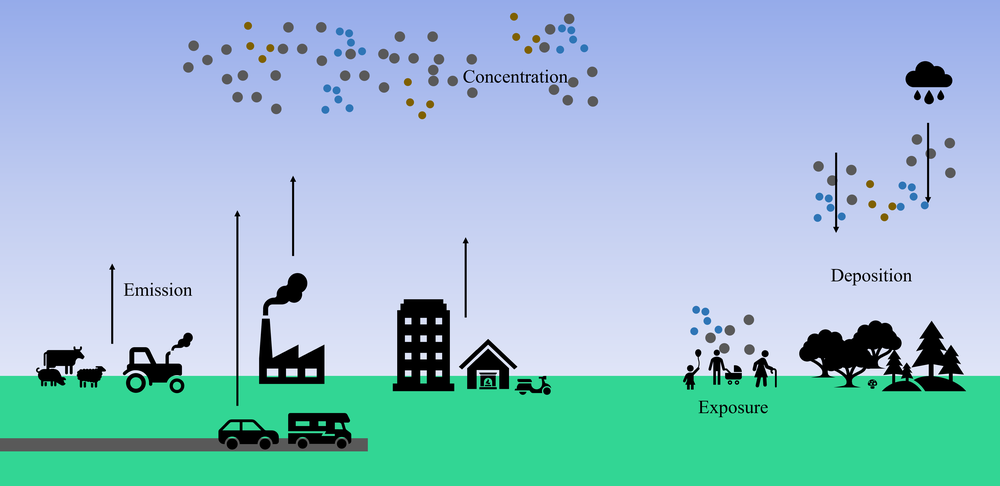What is the difference between emission, concentration, exposure and deposition?
The distinction between 'emission', 'concentration', 'exposure' and 'deposition' is essential when talking about air quality.
'Emissions' refers to the amount of pollutants released from a particular source, such as factories, cars, power plants, fires and other activities or events. It can include various substances such as sulfur dioxide (SO₂), nitrogen dioxide (NO₂), carbon monoxide (CO), volatile organic compounds (VOCs) and particulate matter (PM₂.₅ and PM₁₀). Emissions are the direct release of these pollutants into the atmosphere and are expressed as the total mass of the substance released.
On the other hand, 'concentration' refers to the amount of pollutants actually present in the air at a given place and time. It measures the amount of pollutants per volume of air, often expressed in micrograms per cubic meter (µg/m³) or parts per million (ppm). Concentration is affected by factors such as emissions, atmospheric conditions (such as wind, temperature and precipitation) and the reactions between different pollutants in the air.
'Exposure' is a term used to indicate how much of a pollutant is actually inhaled or absorbed by individuals. Exposure takes into account not only the concentration at a location but also the number of people who live, work or are generally active there. In some cases, specific exposure of, for example, age categories, pregnant women or chronically ill people to a pollutant can be examined.
Finally, 'deposition' refers to the precipitation or deposition of pollutants from the air to the Earth's surface. It is the process by which pollutant particles or gases come down from the atmosphere and adhere to soil, vegetation, water and other surfaces. There are two main forms of deposition: dry deposition and wet deposition.
Dry deposition: This occurs when pollutants are deposited directly on the Earth's surface without the intervention of precipitation. Wind and gravity can carry particles downwards, where they land on soils, buildings or vegetation.
Wet deposition: This occurs via precipitation, such as rain or snow. Pollutants dissolve in raindrops and are carried to the ground. This can lead to the discharge of pollutants into surface waters or soils.

Figure: Conceptual representation of emissions from agriculture, transport, industry and buildings, concentration in the atmosphere, human exposure, and dry and wet deposition.
So, while 'emission' refers to the release of pollutants from sources, and 'concentration' focuses on the amount of those pollutants in the air at a given place and time, 'exposure' indicates how much of those pollutants are actually inhaled by individuals. When pollutants from the air end up on the ground surface, this is called 'deposition'.
